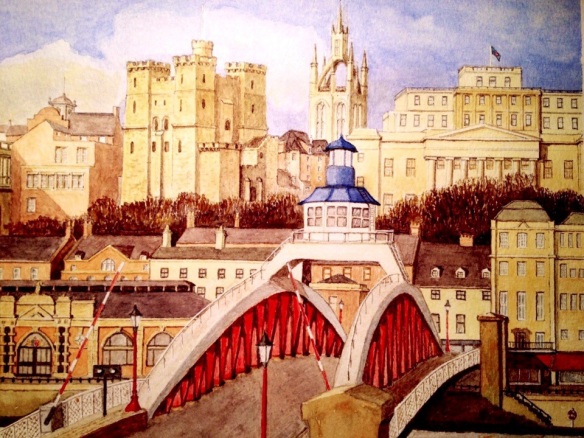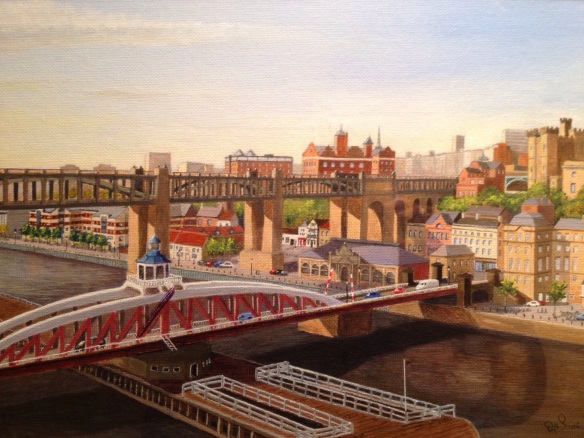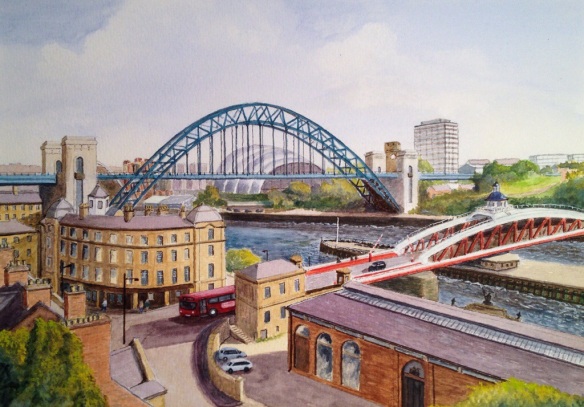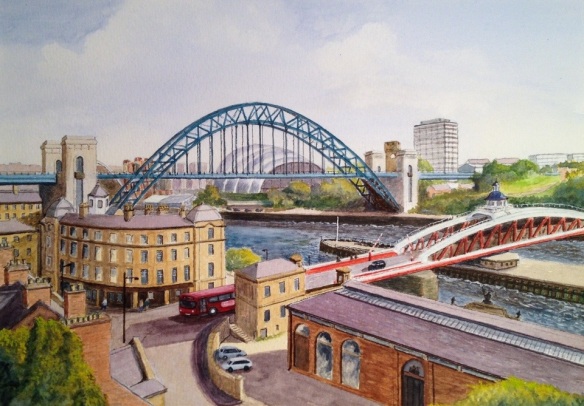Tag Archives: gateshead
Newcastle Sandhill, Quayside and Tyne Bridge – my oil painting (just finished)
Newcastle Quayside
Angel of the North
Newcastle Bridges from the West
In watercolour, finished today, can be seen celebrated local engineer, William Armstrong’s Swing Bridge. Revolutionary of it’s time in 1876, the bridge still powered by its original hydraulic engine, swings through ninety degrees to let ships pass.
Armstrong manufactured the bridge at his engineering works further up-river, paying for it out of his own pocket. The bridge provided a crossing between Newcastle and Gateshead and when open, allowed warships to sail up to his works to be fitted with armaments.
Beyond this, is the Tyne Bridge, built in 1928. Also can be seen The Sage concert hall, built the Gateshead side of the River Tyne, in 2004 with glimpses beyond, of the Baltic Art Gallery and Millenium Bridge.
The Swing Bridge, Newcastle

The Swing Bridge at Newcastle upon Tyne, painted in watercolour, was built in 1876 by Tyneside engineer William Armstrong. He built it at his own cost to allow large ships, such a battleships, to sail further up the River Tyne to be fitted with armaments at his engineering works.
The bridge, allows road traffic to pass between Newcastle and Gateshead and is operated by innovative hydraulic power of its time, swinging through ninety degrees. The original hydraulic engine still operates the bridge to this day. In the background can be seen St. Nicholas’ Cathedral and the Castle.
Newcastle upon Tyne Swing Bridge

This painting in acrylic shows the city of Newcastle upon Tyne viewed from South of the river Tyne on the Gateshead side.
The Swing Bridge was a 19th century feat of engineering of its time, by Armstrong’s Engineering works sited about half a mile upstream. The road bridge is able to turn through 90 degrees to allow passage of ships along the river, some of them Battleships on their way to Armstrong’s works to be fitted out with armaments.






